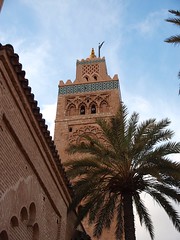During the Miocene and Pliocene, 12-1.6 million years ago, a diverse group of extinct proboscideans, elephant-like animals walked the Earth. Most had four tusks and likely a trunk similar to modern elephants. They were beasts of legend, inspiring myths and stories of fanciful creatures to the first humans to encounter them.
One such fellow was Quintus Sertorius, a Roman statesman come general, who grew up in Umbria. Born into a world at war just two years before the Romans sacked Corinth to bring Greece under Roman rule, Quintus lived much of his life as a military man far from his native Norcia. Around 81 BC, he travelled to Morocco, the land of opium, massive trilobites and the birthplace of Antaeus, the legendary North African ogre who was killed by the Greek hero Heracles.
The locals tell a tale that Quintus requested proof of Antaeus, hard evidence he could bring back to Rome to support their tales so they took him to a mound at Tingis (Tangier, Morocco), where they unearthed the bones of a Neogene elephant, Tetralophodon.
Tetralophodon bones are large and skeletons singularly impressive. Impressive enough to be tasken for something else entirely. By all accounts these proboscidean remains were that of the mythical ogre Antaeus.



